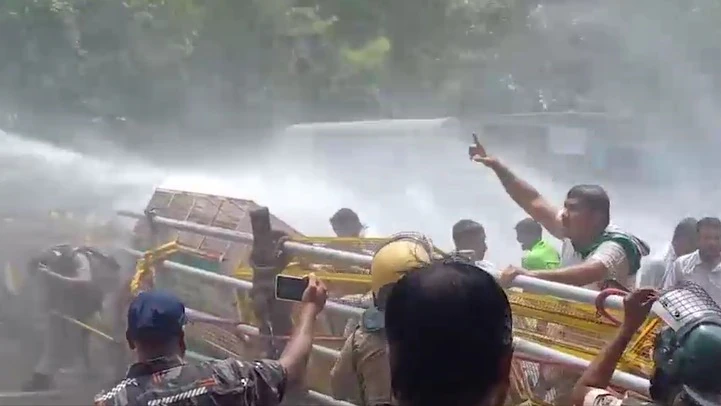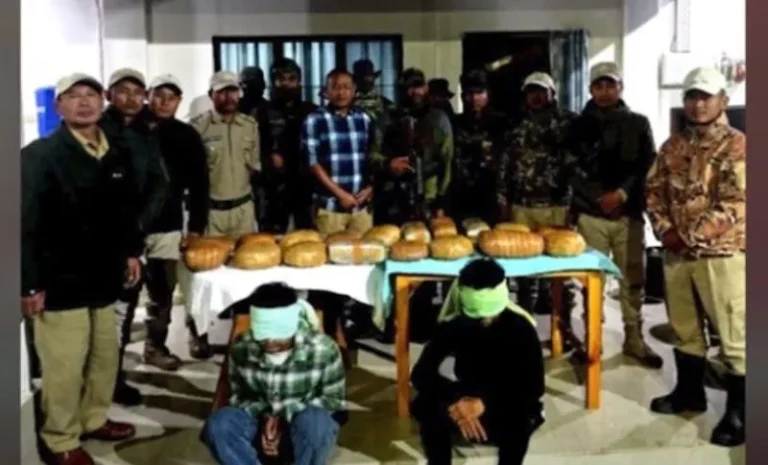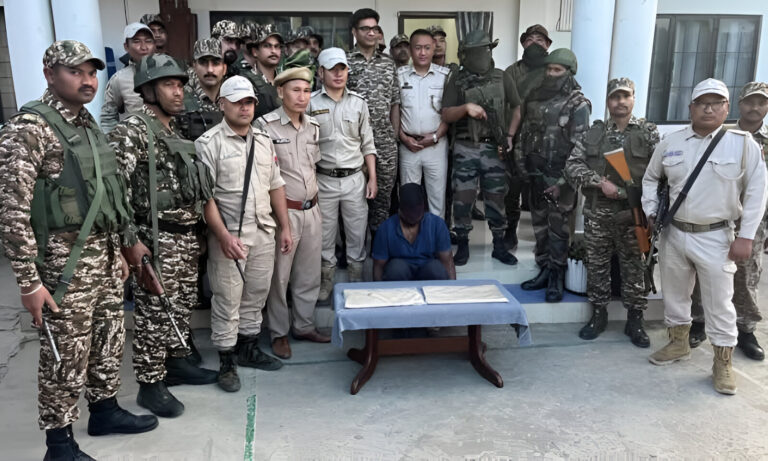Massive Protest Outside Odisha Assembly Over Student’s Self‑Immolation
Summary of the News
A powerful protest erupted outside the Odisha Assembly on July 16, 2025, following the tragic death of a 20‑year‑old B.Ed student from Fakir Mohan Autonomous College in Balasore. The student self-immolated on campus after alleging prolonged sexual harassment by her department head and inaction by the college authorities. The unrest escalated with furious demonstrators attempting to breach barricades; police responded with tear gas and water cannons to disperse the crowd. Opposition parties, including BJD and Congress, joined forces in condemning the incident—calling for a judicial probe and a statewide ‘bandh’ on July 17, 2025, demanding resignations and systemic accountability .
1. Quick Recap
On July 12, a second-year B.Ed student from Fakir Mohan College, Balasore, set herself ablaze after alleged sexual harassment by her department head went unaddressed. Despite suffering 90–95% burns, she succumbed to her injuries at AIIMS Bhubaneswar on July 14. Outrage boiled over on July 16, prompting massive demonstrations outside the Odisha Assembly. Protesters demanded justice; authorities used tear gas and water cannons to control the crowd amid calls for a judicial inquiry and statewide bandh scheduled for July 17.
2. The Unfolding Tragedy
Picture a campus where hope should bloom—but instead, despair took over. A 20-year-old woman, distraught by prolonged harassment from her professor, felt cornered and unheard. On July 12, she poured petrol over herself on campus—an act so desperate, it was heartbreaking to witness . She endured hours in the hospital, clinging to life at AIIMS Bhubaneswar, before passing away late on July 14. Such self-immolation is more than panic; it’s a profound scream for justice.
3. Why the Protest Ignited
Why did protests spread like wildfire? Because this tragedy exposed deep betrayal by trusted institutions. Despite formal complaints and social media outreach by the student, her pleas went unheeded. Friends say she appeared anxious and traumatized before her final act . Anger grew—especially when authorities arrested both the department head and college principal—but questions about delayed responses and possible cover-ups remained. The crisis evolved from a personal tragedy to a statewide uprising.
4. Police Reaction: Tear Gas & Water Cannons
Protesters rallied outside the Odisha Assembly on July 16, demanding justice and accountability. They tried to breach barricades; in response, police fired tear gas and unleashed water cannons to disperse the crowd. It was dramatic—a visual clash of grief and state enforcement. While some argue it was necessary to maintain order, others say it amplified the rage, turning a mourning vigil into a national spectacle.
5. Political Fallout & Bandh Declaration
The incident escalated politically in no time:
- BJD, led by Naveen Patnaik, and Congress mobilized protests, accusing the state government of institutional failure
- They demanded a judicial inquiry, the resignations of Chief Minister Majhi and the Higher Education Minister, and planned a district-wide bandh on July 17
- Congress MP Rahul Gandhi called the tragedy “systematic murder by the system”
- The BJP defended its actions, stating swift arrests and systemic measures were already underway.
This isn’t just local grief—it’s a political storm spreading throughout Odisha.
6. Campus Safety and Institutional Failure
How could a victim’s cries get ignored? Especially when the harassment was reported repeatedly—from internal committees, social platforms, to the police. The university’s Internal Complaints Committee reportedly cleared the accused while demanding the student retract her complaint . The college administration, especially the principal, has been blamed for negligence and institutional betrayal. When a trusted institution fails to protect, trust shatters—and public outrage explodes.
7. What Authorities Are Doing
In the aftermath:
- Both the professor and the principal are under arrest, suspended from duty .
- Governor Hari Babu Kambhampati—also Chancellor of state universities—demanded an official report and is monitoring the situation closely
- A formal UGC inquiry is underway, and the Higher Education Ministry is involved.
- The postmortem process has been questioned, with allegations it was held at 2 AM to avoid scrutiny .
- Meanwhile, Odisha police are investigating, and education authorities are reviewing safety protocols across campuses.
8. Why This Matters Nationally
This tragedy resonates far beyond Odisha’s borders:
- Sexual harassment in education is a painful national issue. This case highlights how institutions may fail to act—and how individuals bear the burden.
- Women’s safety is front and center. As political leaders like Jairam Ramesh have written: “if even ABVP leaders aren’t safe, what’s left?”
- Trust in governance is at stake. When governments fail to protect citizens—especially students—it sparks wider questions about systemic integrity.
- Activism and protest culture are alive again. Students and citizens are taking to the streets—and governments must navigate between control and empathy.
FAQs
Q1. Why is the bandh scheduled for July 17?
Opposition parties called the inter-district shutdown to pressure the government into a judicial inquiry and demand accountability.
Q2. Was the department head found guilty?
He’s under arrest, but legal proceedings are ongoing. Investigations aim to clarify his role in harassment and threats.
Q3. Why did police use tear gas and water cannons?
Authorities claim they needed to control the crowd after attempts to breach barricades; critics argue it escalated tensions.
Q4. What follow-up actions are being taken by the university?
Governor-ordered inquiry and UGC involvement; protocols for campus safety and grievance mechanisms are being reviewed.
Q5. Could this incident reshape national education policy?
Possibly—heightened attention may lead to national reforms, strict monitoring, and quicker response frameworks for harassment cases.






